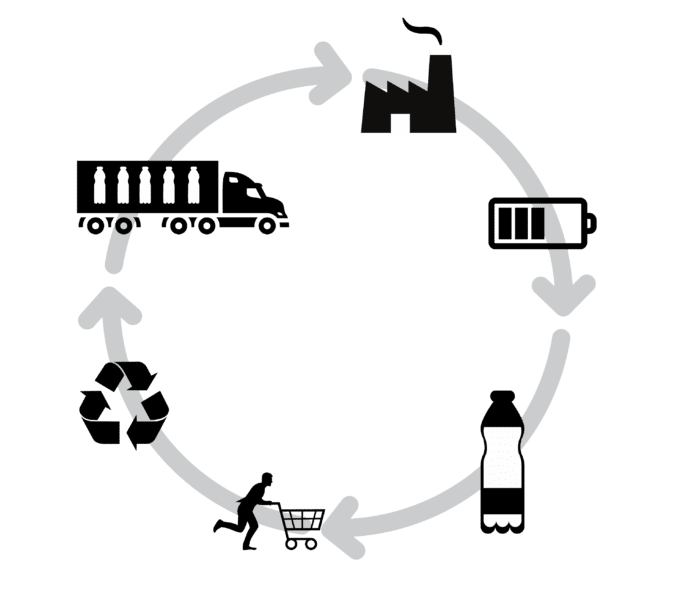What is the difference between rPET, cardboard and glass?


In this article, we will look together at a comparison of materials, specifically rPET, cardboard and glass, from different aspects of ecology and ease of use.


Transport and energy used for transport
- rPET – Light material, less weight per volume. Less energy consumed for transport – 13.7 MJ / kg needed to transport an average plastic beverage.
- Cardboard – The shape of the bottle is suitable for efficient transport.
- Glass – 25.4 MJ / Kg is needed to transport the average beverage in the glass.
Recyclability
- rPET – 100% recyclable. The bottle, lid and etiquette are made of materials that are easy to separate and recycle.
- Cardboard – 100% recyclable. Materials separation is required. The main problem = aluminium.
- Glass – 3 materials, an aluminium lid and a plastic or paper label that needs to be separated.
Energy needed for recycling
- rPET – 53,91 kJ is used to recycle one plastic bottle.
- Cardboard – 330 kJ are needed to recycle one multi-layer carton (1L).
- Glass – 565,8 kJ is used to melt one bottle.
Emissions saved by recycling
- rPET – One ton of recycled plastic will save 1,350 kg of CO2.
- Cardboard – One ton of recycled cardboard will save 650 kg of CO2.
- Glass – One ton of recycled glass will save 315 kg of CO2.
Usage and fragility
- rPET – High material durability, does not need padding for transport to prevent damage. Easy to carry.
- Cardboard – It does not need padding for transport to prevent damage. Easy to carry.
- Glass – Fragile, glass requires secondary packaging to protect the material. If broken, waste will be generated from the packaged food and there is a risk of injury. Heavier material, more complicated carrying.men
Did you know these facts? What material do you prefer? Let us know on our Facebook or Instagram.
